Renewable Emission
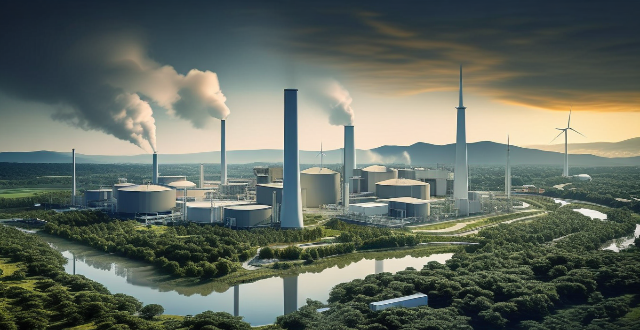
What is the impact of renewable energy on emission reduction goals ?
The shift to renewable energy sources such as solar, wind, hydro, and geothermal power is vital for reducing greenhouse gas emissions and achieving global emission reduction goals. This transition brings multiple benefits including decreased reliance on fossil fuels, improved air quality, enhanced energy security, economic stimulation through job creation and long-term cost savings, technological innovation leading to reduced costs, and significant contributions to mitigating climate change. As technology advances and economies of scale are achieved, renewable energy's role in facilitating further progress toward emission reduction objectives will become increasingly important.

Are current emission reduction efforts enough to combat climate change ?
The article discusses whether current efforts to reduce emissions are sufficient to combat climate change. It outlines various initiatives, including national pledges, renewable energy expansion, energy efficiency measures, carbon pricing mechanisms, and forest conservation. However, it argues that these efforts fall short of the required targets, pointing out gaps between commitments and reality, insufficient policy support, and challenges in changing behaviors and cultural norms. The article suggests increasing the ambition of national commitments, enhancing energy transition policies, investing in innovation and research, promoting international cooperation, and encouraging sustainable lifestyles as ways to improve emission reduction efforts.

What role do governments play in achieving global emission reduction targets ?
Governments play a crucial role in achieving global emission reduction targets by setting and enforcing environmental standards, investing in clean energy infrastructure, promoting energy efficiency, supporting research and development, and collaborating internationally. These actions help reduce greenhouse gas emissions and promote a healthier environment.

What are the challenges faced by developing countries in emission reduction ?
Developing countries face numerous challenges in reducing their greenhouse gas emissions, including lack of financial resources, technological constraints, socio-economic factors, policy and regulatory challenges, cultural and educational barriers, and natural resource availability. These challenges highlight the complex nature of emission reduction efforts in developing countries and underscore the need for international cooperation, financial assistance, and technology transfer to support their transition to a low-carbon future.

What are some effective strategies for promoting energy conservation and emission reduction ?
Energy conservation and emission reduction are crucial for sustainable development and addressing climate change. Effective strategies include education and awareness, government policies and regulations, financial incentives and subsidies, technological innovation, infrastructure and urban planning, and individual actions. By implementing these strategies, we can work towards a future where energy is used efficiently, emissions are reduced, and our planet is protected for generations to come.

Can energy conservation and emission reduction policies help combat climate change ?
Energy conservation and emission reduction policies are essential for combating climate change. These policies aim to reduce energy consumption, promote renewable energy sources, and decrease greenhouse gas emissions. Improving energy efficiency and encouraging energy conservation can significantly reduce energy consumption. Increasing investment in renewable energy technologies and supporting research and development of clean energy technologies can help reduce reliance on fossil fuels and decrease greenhouse gas emissions. Implementing carbon pricing mechanisms and regulating industrial emissions are also important strategies for reducing greenhouse gas emissions. Overall, these policies play a vital role in mitigating the effects of climate change and working towards a more sustainable future.

What are the main objectives of energy conservation and emission reduction policies ?
Energy conservation and emission reduction policies aim to achieve several key objectives that are crucial for the sustainable development of our planet. These objectives can be broadly categorized into environmental, economic, and social dimensions. The main goals include reducing greenhouse gas emissions, protecting ecosystems and biodiversity, improving air quality, enhancing energy efficiency, stimulating innovation and job creation, reducing dependence on fossil fuels, promoting equitable access to energy, and raising awareness and education. By addressing these objectives, these policies play a crucial role in steering our societies towards a more sustainable future.

How do emission trading schemes work and are they effective ?
Emission trading schemes are market-based mechanisms designed to regulate the release of pollutants, especially greenhouse gases like CO2. These schemes operate on a "cap and trade" principle, whereby a regulatory body sets a limit on emissions, allocates emission allowances, and allows businesses to buy and sell these allowances in a marketplace. Companies must monitor and report their emissions, facing penalties for non-compliance. The effectiveness of such schemes varies but offers advantages like cost-efficiency, flexibility, and innovation incentives. However, challenges include complexity, political will, leakage, and equity concerns. Case studies like the EU ETS and California's Cap-and-Trade Program show mixed results, indicating that while emission trading schemes can be effective, their success depends on careful planning, robust implementation, and continuous evaluation.

How does deforestation affect global emission levels and what can be done about it ?
Deforestation significantly contributes to global emission levels, primarily through the release of carbon dioxide (CO2) and other greenhouse gases. When trees are cut down or burned, the carbon they have absorbed from the atmosphere during their lifetime is released back into the air. This process exacerbates climate change by increasing the concentration of atmospheric CO2 and other greenhouse gases, which trap heat in the Earth's atmosphere. To mitigate the effects of deforestation on global emissions, various strategies can be implemented, including reforestation, sustainable forest management, reducing demand for forest products, promoting eco-friendly alternatives, strengthening laws and policies, and raising public awareness about the importance of forests in mitigating climate change. By taking these steps, it is possible to reduce the contribution of deforestation to global emissions and work towards a healthier planet.
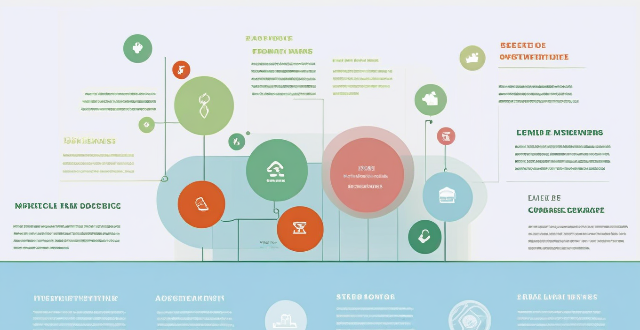
How does renewable energy contribute to reducing carbon emissions ?
Renewable energy is crucial for mitigating climate change by reducing carbon emissions. It displaces fossil fuels, lowers emissions intensity, improves energy efficiency, and reduces system leaks. Benefits include mitigating climate change, improving air quality, and offering economic advantages such as job creation and savings on fuel costs.

Can we achieve a zero-emission economy by 2050 ?
The question of whether we can achieve a zero-emission economy by 2050 is a complex one that involves multiple factors. Key points to consider include the current state of emissions, challenges to achieving zero emissions, and potential pathways to achieving this goal. Currently, global emissions are still rising, with the transportation sector being a major contributor. While there have been significant advancements in renewable energy technologies, their adoption rates vary widely across different regions. Challenges to achieving zero emissions include building the necessary infrastructure for a zero-emission economy, political will, and public acceptance. Governments must be willing to implement policies that support the transition to a zero-emission economy, and the public must be willing to adopt new technologies and change their behavior to reduce emissions. Potential pathways to achieving zero emissions include increased investment in renewable energy, electrification of transportation, carbon capture and storage (CCS) technology, changes in consumer behavior, and international cooperation. Achieving a zero-emission economy by 2050 is an ambitious goal, but it is not impossible. It requires concerted efforts from governments, businesses, and individuals worldwide. By investing in renewable energy, electrifying transportation, implementing CCS technology, changing consumer behavior, and cooperating internationally, we can make significant progress toward this goal. However, it is essential to recognize that achieving a zero-emission economy is not just about technology; it also requires political will and public acceptance.
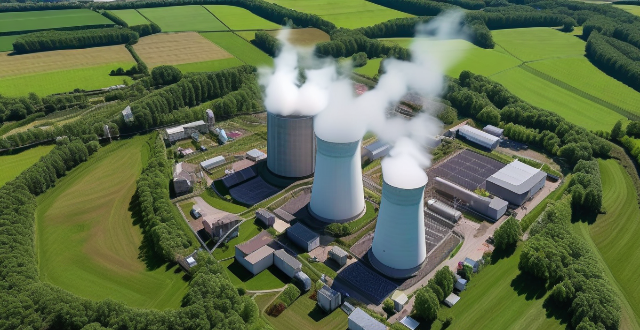
What is the role of renewable energy in reducing greenhouse gas emissions ?
Renewable energy sources like solar, wind, hydro, and geothermal power are crucial in reducing greenhouse gas emissions as they produce significantly fewer carbon emissions than fossil fuels. These abundant and sustainable sources can be replenished naturally, creating a more sustainable future. Investing in renewable energy also brings economic benefits by decreasing technology costs and stimulating local economies. Renewable energy improves air quality by not producing harmful pollutants associated with fossil fuel combustion. It plays a vital role in mitigating the effects of climate change by reducing greenhouse gas emissions. By transitioning to a low-carbon economy powered by renewable energy, we can avoid the worst impacts of climate change.

How do energy conservation and emission reduction policies impact the economy ?
Energy conservation and emission reduction policies have both positive and negative impacts on the economy. Positively, they create new jobs, promote innovation, improve public health, and enhance energy security. Negatively, they can increase operating costs for businesses, lead to job losses, slow down economic growth, and entail significant adjustment costs. It is crucial for policymakers to carefully consider these factors when designing and implementing sustainability initiatives.

How can individuals contribute to emission reduction efforts ?
Climate change is a pressing global issue that requires collective action. Individuals can contribute to emission reduction efforts by reducing energy consumption, switching to renewable energy sources, reducing waste, planting trees, and advocating for change. By adopting eco-friendly habits and supporting systemic change, we can all help mitigate the effects of climate change and create a healthier planet for future generations.
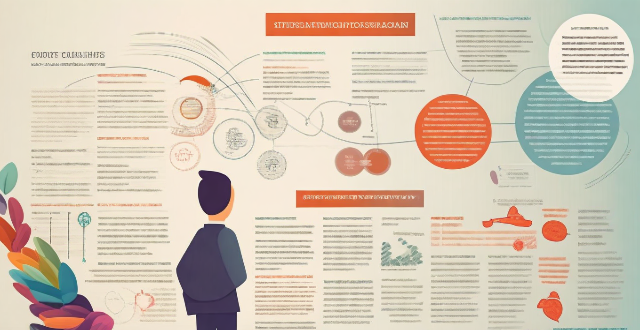
Are there any international agreements or initiatives related to energy conservation and emission reduction ?
The article provides an overview of several international agreements and initiatives related to energy conservation and emission reduction. These include the United Nations Framework Convention on Climate Change (UNFCCC), the International Energy Agency (IEA), the Clean Energy Ministerial (CEM), the Global Green Growth Institute (GGGI), and the Renewable Energy Policy Network for the 21st Century (REN21). The objectives, key elements, and achievements of each are discussed in detail. The article concludes by emphasizing the importance of these collaborative efforts in addressing climate change and ensuring sustainable development.

What are the current trends in renewable energy policies globally ?
The global community is increasingly prioritizing renewable energy policies as part of efforts to combat climate change and reduce carbon emissions. Governments are offering financial incentives, setting ambitious targets for renewable energy consumption, promoting energy efficiency, and encouraging private sector investment in clean energy projects. These trends reflect a worldwide commitment to creating a more sustainable future through the adoption of renewable energy sources.
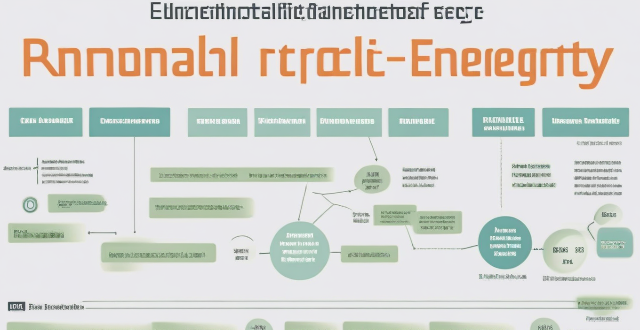
How do international climate agreements influence national policies on renewable energy ?
International climate agreements significantly shape national renewable energy policies by setting targets, offering financial aid and technology transfer, promoting innovation and collaboration, and creating market opportunities. This influence is evident in countries' ambitious renewable energy goals, their participation in global initiatives, and the growth of related industries. Such concerted efforts are crucial for achieving a sustainable, low-carbon future.

What role do individuals play in achieving the goals of energy conservation and emission reduction policies ?
The article discusses the critical role of individuals in achieving energy conservation and emission reduction policies. It emphasizes the importance of individual action, highlighting the collective impact of small changes and the potential for behavioral change. The article provides various ways individuals can contribute, such as reducing energy consumption, reducing waste, supporting renewable energy, and advocating for change. It concludes by emphasizing the power of individuals to bring about change and safeguard the planet for future generations.

What is a carbon credit system ?
Carbon Credit System: A market-based approach that incentivizes the reduction of greenhouse gas emissions by allowing trades of emission allowances and investments in emission-reducing projects. It operates on principles like emissions trading, offsetting, and regulation to drive environmental benefits and innovation. However, challenges such as quality assurance, persistence in reducing actual emissions, and equity concerns need to be addressed for its effective implementation.
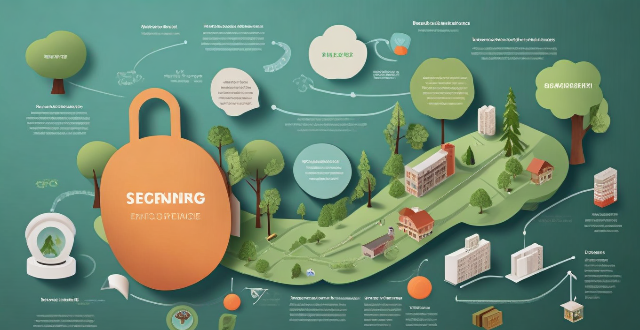
How do carbon credits contribute to reducing greenhouse gas emissions ?
Carbon credits are a key tool in the fight against climate change, as they incentivize emission reductions, facilitate international cooperation, support sustainable projects, enhance transparency and accountability, and promote market efficiency. By creating economic value for carbon reduction efforts, stimulating innovation, meeting global targets, sharing mitigation burdens, financing renewable energy and forest conservation projects, ensuring rigorous monitoring and verification, promoting cost-effective abatement, and providing clear price signals, carbon credits play a crucial role in reducing greenhouse gas emissions.

How can governments encourage companies to adopt energy conservation and emission reduction measures ?
Governments can encourage companies to adopt energy conservation and emission reduction measures by implementing a combination of strategies including financial incentives, regulatory measures, information and education campaigns, research and development support, public procurement policies, and partnerships and collaborations. These efforts not only contribute to environmental sustainability but also foster innovation and economic growth in green industries.

What steps can governments take to promote renewable energy jobs ?
Governments can promote renewable energy jobs through various policies and incentives. They can implement regulations like Renewable Portfolio Standards, Feed-in Tariffs, Net Metering Laws, and Renewable Energy Certificates. Financial incentives such as tax credits, grants, loans, and investment tax exemptions can also be provided. Governments can support research and development by funding studies, collaborating with academia, forming public-private partnerships, and supporting startups. Education and training programs, infrastructure development, streamlining permitting processes, encouraging local production and consumption, and international cooperation are other steps that can be taken to promote renewable energy jobs.

What are the benefits of implementing energy conservation and emission reduction policies in businesses ?
Implementing energy conservation and emission reduction policies in businesses can bring numerous benefits. These benefits include environmental protection, cost savings, increased efficiency, competitive advantage, government incentives, investor appeal, improved public image, job creation, and positive community impact. By adopting these policies, businesses can contribute to a more sustainable future while also enhancing their own success and growth potential.

Can renewable energy sources effectively replace fossil fuels ?
- Renewable energy sources are sustainable and produce fewer emissions than fossil fuels. - Intermittency, storage, and cost are challenges to the adoption of renewable energy. - Grid integration, energy storage advancements, and government policies can help overcome these challenges.

What are the key considerations for integrating renewable energy sources into urban designs ?
Key considerations for integrating renewable energy sources into urban designs include assessing available renewable energy sources, prioritizing energy efficiency, ensuring grid connectivity, involving the community, and considering financial viability.

How can carbon credits be used to incentivize renewable energy adoption ?
Carbon credits can incentivize renewable energy adoption by creating a market, providing financial support, encouraging sustainable practices, and raising awareness about climate change.

How effective are current climate and environmental policies in reducing carbon emissions ?
The effectiveness of current climate and environmental policies in reducing carbon emissions varies, with global initiatives like the Kyoto Protocol and Paris Agreement showing mixed results. National policies such as renewable energy targets, carbon pricing mechanisms, and energy efficiency standards have contributed to emission reductions but face political and economic challenges. Technological advances have lowered the cost of clean energy solutions. However, significant reductions require stronger governmental commitment, financial investments in green technology, and increased public engagement.

What role does renewable energy play in reducing carbon footprint ?
Renewable energy is crucial in reducing carbon footprint as it is obtained from natural resources and does not emit harmful greenhouse gases. It benefits the environment, economy, and society by mitigating climate change, reducing dependence on imported fuels, and providing affordable energy to remote areas. Solar, wind, hydro, geothermal, and biomass energy are types of renewable energy sources. However, challenges such as cost, intermittency, storage, and grid integration need to be addressed. Continued investment and innovation can make renewable energy more accessible and affordable for everyone.

Can carbon capture help us achieve our climate goals ?
Carbon capture and storage (CCS) has the potential to mitigate climate change by capturing CO2 emissions from power plants and industrial processes, preventing them from entering the atmosphere. The captured CO2 can be transported to a suitable location for long-term storage or used for enhanced oil recovery. However, CCS technology faces challenges such as high costs, energy losses, and public acceptance issues. While it is not a silver bullet, CCS could play a valuable role in reducing greenhouse gas emissions when integrated with renewable energy strategies and energy efficiency measures.

What role do carbon markets play in international climate change agreements ?
In international climate change agreements, carbon markets are a crucial component. They provide a mechanism for countries to meet their greenhouse gas (GHG) emission reduction targets in a cost-effective manner by trading carbon credits. Carbon markets encourage businesses and governments to invest in cleaner technologies and practices. They offer flexibility to countries in meeting their emission reduction commitments, provide incentives for innovation, facilitate international cooperation, and can be integrated with other environmental and economic policies. Examples of carbon markets in international agreements include the Kyoto Protocol and the Paris Agreement.